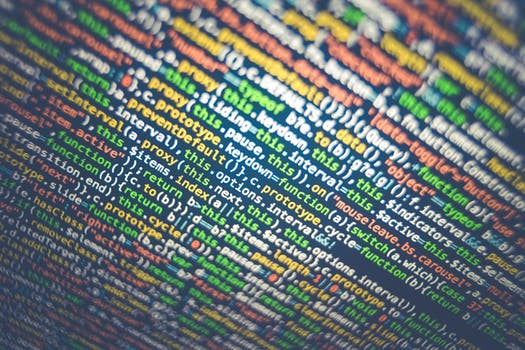TheDeveloperBlog.com
C-Sharp | Java | Python | Swift | GO | WPF | Ruby | Scala | F# | JavaScript | SQL | PHP | Angular | HTML
Golang csv Examples
Use the encoding-cvs package. Call NewReader and Read to read records.Then: We create a new reader with bufio and pass it to the csv.NewReader method. We use Read() and test EOF.
Record: We display the entire record with Println. Then we use len to determine the number of values in each record.
Range: We use range to iterate over the indexes of the record slice. We access individual records from the line.
Golang program that uses csv, NewReader on file
package main
import (
"bufio"
"encoding/csv"
"os"
"fmt"
"io"
)
func main() {
// Load a TXT file.
f, _ := os.Open("C:\\programs\\file.txt")
// Create a new reader.
r := csv.NewReader(bufio.NewReader(f))
for {
record, err := r.Read()
// Stop at EOF.
if err == io.EOF {
break
}
// Display record.
// ... Display record length.
// ... Display all individual elements of the slice.
fmt.Println(record)
fmt.Println(len(record))
for value := range record {
fmt.Printf(" %v\n", record[value])
}
}
}
Contents: file.txt
cat,dog,bird
10,20,30,40
fish,dog,snake
Output
[cat dog bird]
3
cat
dog
bird
[10 20 30 40]
4
10
20
30
40
[fish dog snake]
3
fish
dog
snake
ReadAll: This consumes the entire CSV Reader's data at once. We then can use a for-loop to iterate over the lines.
ForUnderscore: In this example we ignore the error result from ReadAll. We use an underscore variable name to discard the error.
Raw literal: We specify the string as a raw literal with backtick characters. The string has three lines.
StringsGolang program that uses ReadAll, strings.NewReader
package main
import (
"encoding/csv"
"fmt"
"strings"
)
func main() {
// Create a 3-line string.
data := `fish,blue,water
fox,red,farm
sheep,white,mountain
frog,green,pond`
// Use strings.NewReader.
// ... This creates a new Reader for passing to csv.NewReader.
r := csv.NewReader(strings.NewReader(data))
// Read all records.
result, _ := r.ReadAll()
fmt.Printf("Lines: %v", len(result))
fmt.Println()
for i := range result {
// Element count.
fmt.Printf("Elements: %v", len(result[i]))
fmt.Println()
// Elements.
fmt.Println(result[i])
}
}
Output
Lines: 4
Elements: 3
[fish blue water]
Elements: 3
[fox red farm]
Elements: 3
[sheep white mountain]
Elements: 3
[frog green pond]
Related Links:
- Golang strconv, Convert Int to String
- Golang Odd and Even Numbers
- Golang Recover Built In: Handle Errors, Panics
- Learn Go Language Tutorial
- Golang html template Example
- Golang http.Get Examples: Download Web Pages
- Golang container list Example (Linked List)
- Golang base64 Encoding Example: EncodeToString
- Golang os exec Examples: Command Start and Run
- Golang String Between, Before and After
- Golang os.Remove: Delete All Files in Directory
- Golang First Words in String
- Golang flag Examples
- Golang Regexp Find Examples: FindAllString
- Golang Regexp Examples: MatchString, MustCompile
- Golang Index, LastIndex: strings Funcs
- Golang Compress GZIP Examples
- Golang Interface Example
- Golang 2D Slices and Arrays
- Golang Sscan, Sscanf Examples (fmt)
- Top 41 Go Programming (Golang) Interview Questions (2021)
- Golang Padding String Example (Right or Left Align)
- Golang Equal String, EqualFold (If Strings Are the Same)
- Golang map Examples
- Golang Map With String Slice Values
- Golang Array Examples
- Golang Remove Duplicates From Slice
- Golang If, Else Statements
- Golang ParseInt Examples: Convert String to Int
- Golang Strings
- Golang strings.Map func
- Golang bufio.ScanBytes, NewScanner (Read Bytes in File)
- Golang Built In Functions
- Golang bytes.Buffer Examples (WriteString, Fprintf)
- Golang Bytes: Slices and Methods
- Golang Caesar Cipher Method
- Golang Chan: Channels, Make Examples
- Golang Math Module: math.Abs, Pow
- Golang Reverse String
- Golang Struct Examples: Types and Pointers
- Golang path and filepath Examples (Base, Dir)
- Golang Substring Examples (Rune Slices)
- Golang Suffixarray Examples: New, Lookup Benchmark
- Golang switch Examples
- Golang Convert Map to Slice
- Golang Convert Slice to String: int, string Slices
- Golang Const, Var Examples: Iota
- Golang ROT13 Method
- Golang strings.Contains and ContainsAny
- Golang rand, crypto: Random Number Generators
- Golang String Literal Examples (Repeat Method)
- Golang ToLower, ToUpper String Examples
- Golang Trim, TrimSpace and TrimFunc Examples
- Golang Join Examples (strings.Join)
- Golang Len (String Length)
- Golang Convert String to Rune Slice (append)
- Golang JSON Example: Marshal, Unmarshal
- Golang Replace String Examples: Replacer, NewReplacer
- Golang nil (Cannot Use nil as Type)
- Golang Slice Examples
- Golang ListenAndServe Examples (HandleFunc)
- Golang Fibonacci Sequence Example
- Golang Time: Now, Parse and Duration
- Golang bits, OnesCount (Get Bitcount From Int)
- Golang Fprint, Fprintf and Fprintln Examples (fmt)
- Golang Func Examples
- Golang csv Examples
- Golang Fields and FieldsFunc
- Golang unicode.IsSpace (If Char Is Whitespace)
- Golang fmt.Println Examples
- Golang for Loop Examples: Foreach and While
- Golang ioutil.WriteFile, os.Create (Write File to Disk)
- Golang File Handling
- Golang range: Slice, String and Map
- Golang Readdir Example (Get All Files in Directory)
- Golang Sort Slice: Len, Less, Swap in Interface
- Golang Get Lines in File (String Slice)
- Golang Split Examples (SplitAfter, SplitN)